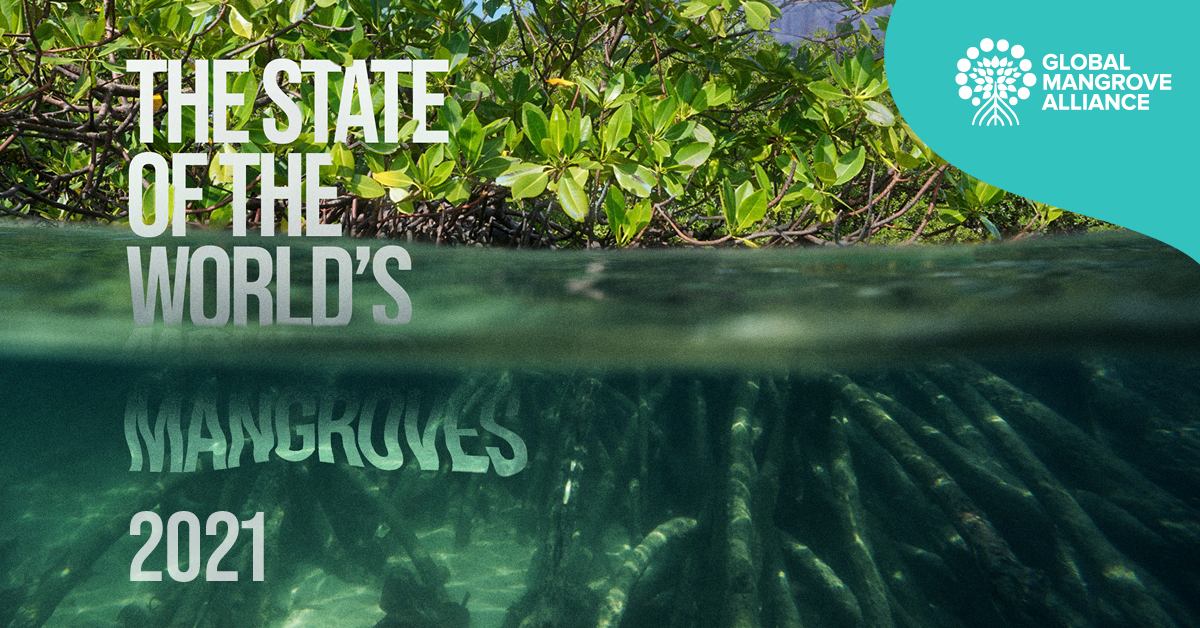New report shows slowdown in mangrove losses–providing a ‘last best chance’ for global action to protect coastal forests
100 contributors lend expertise to first-ever The State of the World’s Mangroves publication
Today the Global Mangrove Alliance released their inaugural report, The State of the World’s Mangroves, a compilation of the most current information available on what we know about mangrove forests and what’s being done to reverse the downward trends impacting the forests and the local communities who depend on them.
Due primarily to human-caused deforestation, some 4.3% of mangroves were lost globally in the two decades leading up to 2016, with much larger losses prior to that. Today there are 136,000km2of mangroves remaining world-wide—an area about the size of Costa Rica—and nearly 20% of these forests are found in Indonesia.
This publication represents a remarkable synthesis, 100 authors from around the world (over 40 locales) have come together, sharing cutting edge science and compelling stories. The narrative they tell, for the first time, is that we now have the knowledge to turn things around for these critical ecosystems. We know the problems, but we also know the solutions. The challenge is turning these solutions into actions, by swaying leaders at all levels of society to protect the mangroves still standing and restore what has been lost.
“We are at a nexus. Science has provided us with compelling numbers describing the immense value of mangroves to people –for carbon, climate adaptation, fish, timber, coastal protection, tourism, and more. The State of the World’s Mangroves report lays a clear message for world leaders convening on climate and biodiversity. Mangroves are a great asset but if we fail to properly value and protect them, we’ll lose more than any financial investment that’s been made in mangroves to date. This is our last best chance to create positive, lasting change,” said Mark Spalding, Lead Marine Scientist for The Nature Conservancy.
The State of the World’s Mangroves draws on maps from Global Mangrove Watch, an online platform that provides access to a variety of datasets detailing mangrove values, threats and opportunities for conservation and restoration.
The report’s highlights:
- Humans are responsible for over 60% of mangrove loss. Primary causes include conversion to farmland, agriculture and/ or urbanization
- Around 42% of all remaining mangroves exist in designated protected areas
341 threatened species depend on mangrove habitat - Some 4.1 million small-scale fishers depend on mangroves
- Mangroves prevent more than $65 billion in property damages from storms and reduce flood risk to some 15 million people every year
- Mangroves are the most efficient carbon capture and storage systems on the planet. They currently store carbon that’s equivalent to over 21 billion tons of CO2
UN Secretary General’s Special Envoy for the Ocean Ambassador Peter Thomson wrote the report’s foreword warning how quickly mangroves could be lost beyond our ability to bring them back. “If their demise is a crime against nature, then surely it’s also a crime against the best interests of humanity,” Ambassador Thomson warned.
“In sharing the challenges confronting coastal communities, and working together for coastal resilience, the Global Mangrove Alliance will no doubt play an important role in both the UN Decade on Ecosystem Restoration and UN Decade of Ocean Science for Sustainable Development, both of which got underway this year,” he added.
“Conserving and restoring mangroves at scale depends on collaboration, and innovative partnerships like this one are critical to meeting the global challenge. By directly linking the needs and the experiences of local and indigenous peoples with cutting-edge science, together we can help drive the most forward-thinking national and international policies,” said Karen Douthwaite, Lead Specialist, Oceans for WWF.
“This publication has raised the voices of coastal communities, who often have the most to lose from mangrove loss but also have the most to contribute towards long term mangrove management and restoration. These communities have built up a wealth of knowledge of how to manage, protect, and restore mangroves. By working with communities, we can safeguard and restore the world’s mangroves and improved the livelihoods of coastal people” said Leah Glass, Technical Advisor for Mangroves and Blue Carbon for Blue Ventures.
The Global Mangrove Alliance released the report in anticipation of critical convenings including the IUCN World Conservation Congress, Convention on Biological Diversity COP15, and the United Nations Climate Change Conference COP26. Alliance members are calling on local and national government leaders to accelerate their efforts to protect and restore mangroves and challenging the private sector to increase investment in keeping mangroves standing. Read the full report here (https://www.mangrovealliance.org/mangrove-forests/)


